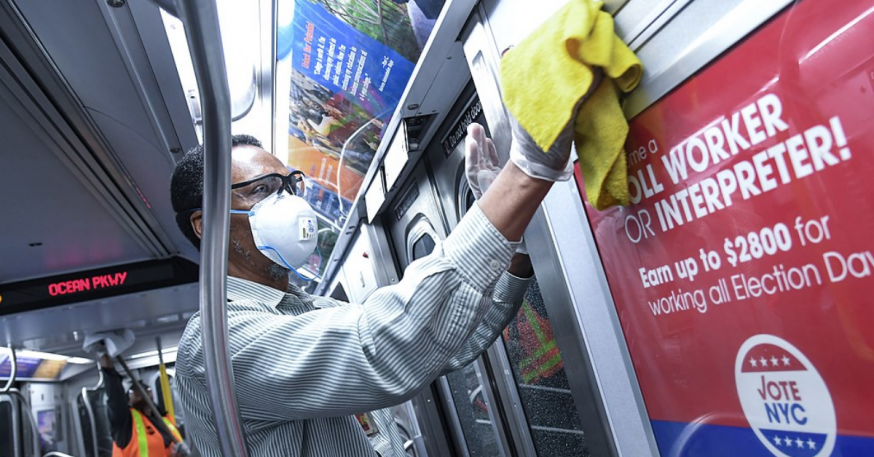
Worker cleans subway car to prevent the spread of COVID-19 (MTA)
Feb. 15, 2021 By Allie Griffin
The MTA is reducing the subway’s overnight shutdown period and expanding its hours of operation, state officials announced today.
The four-hour overnight subway shutdown that has been in place for roughly 10 months will be reduced beginning Monday, Feb. 22.
Starting Monday, the system will be closed for just two hours, from 2 a.m. to 4 a.m. each night — a decrease from the current four-hour nightly shutdown, from 1 a.m. to 5 a.m., MTA Chairman and CEO Patrick Foye said.
The MTA decided to suspend 24/7 service across the whole system in an unprecedented move last May in order for crews to deep clean and disinfect subway cars and stations on a daily basis.
The reduced, two-hour period will still provide crews with enough time to disinfect the system, Interim NYC Transit Authority President Sarah Feinberg said.
Feinberg indicated that the MTA would gradually return the subway to 24-hour service as New York City reopens.
“One year into the pandemic and 10 months into our overnight closure, New York is starting to look at a return to normalcy…,” she said. “We have determined that a shortened overnight closure is an appropriate step forward towards the return of around-the-clock service.”
One Comment

Everyone has known for decades that the subway, bus, commuter rail and ferries are a Petri dish for catching a cold, the flu or other communicable diseases. The rise of a growing homeless population, who ride our subways and live at stations have made matters worse. They clearly have little ability to maintain personal hygiene. MTA Chairman Pat Foye’s having transit workers deep clean the entire system using an “enhanced daily cleaning procedure,” or scrub strategy, should have been the norm for years. Between homeless on board and pre-COVID-19 rush hour standing room only crowds, they need to be thoroughly cleaned on a 24 hour basis. The odds increase for spreading a communicable disease when you are trapped pre-COVID-19 on a crowded bus or subway for long periods of time. Pre-COVID-19, millions of New Yorkers rode the subway, bus or commuter rail. The best time to clean subway cars is off peak or overnight when a majority of the fleet is not in transit service.
It should never have taken the potential spread of the corona virus for the MTA to properly clean equipment and stations. Safety and security of the riding public should always be the number one priority.
NYC has always been a 24/7 town. As more people are vaccinated, the next step is to resume round the clock service in coming months hopefully by June.
(Larry Penner is a transportation advocate, historian and writer who previously worked for the Federal Transit Administration Region 2 New York Office. This included the development, review, approval and oversight for billions in capital projects and programs for the MTA, NYC Transit, Long Island Rail Road, Metro North Rail Road MTA Bus, New Jersey Transit along with 30 other transit agencies in NY & NJ).